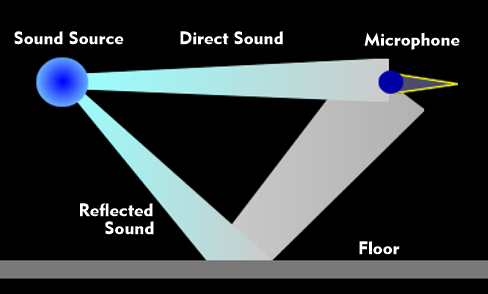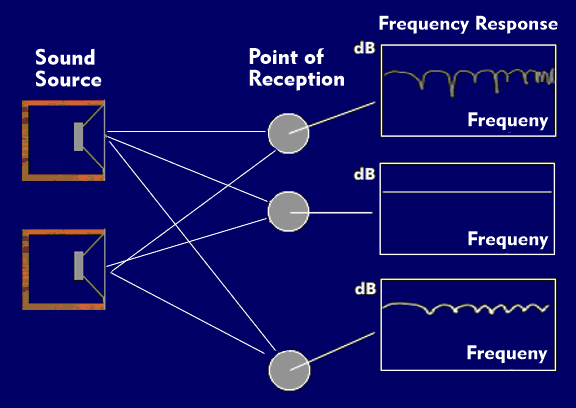comb filter effect
Comb filter effects occur in acoustics and are caused by the superposition of time-delayed signals. Time-delayed signals occur when one signal arrives directly, and others arrive at a microphone or the listener via reflections from walls, floors, or ceilings. The direct signal arrives before the refexion signals in time, causing the signals to influence each other. This can be expressed as an emphasis or attenuation of the sound.
Since the reflection travel times are constant, the phase positions shift with frequency. A lower frequency could thus be in phase with the directly incoming frequency, while a higher frequency could compensate for part of the directly incoming frequency and thus reduce it in level.
If the amplitudes of the direct and reflected sound are equal and have the same phase, the levels sum up to twice the amplitude value; if they have opposite phase, they cancel each other out.
The summation and subtraction of different frequencies results in a frequency spectrum comparable to that of a comb filter, hence the name comb filter effect.


